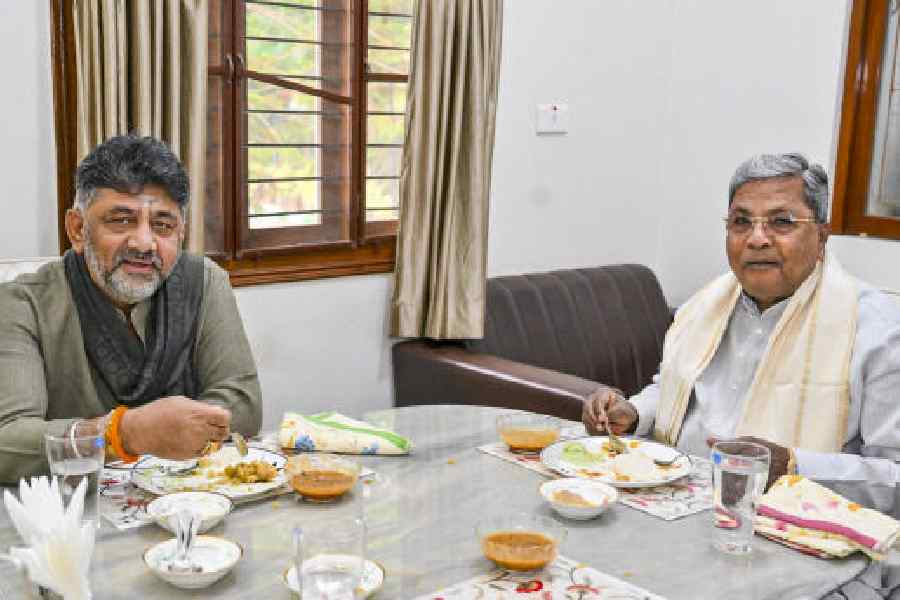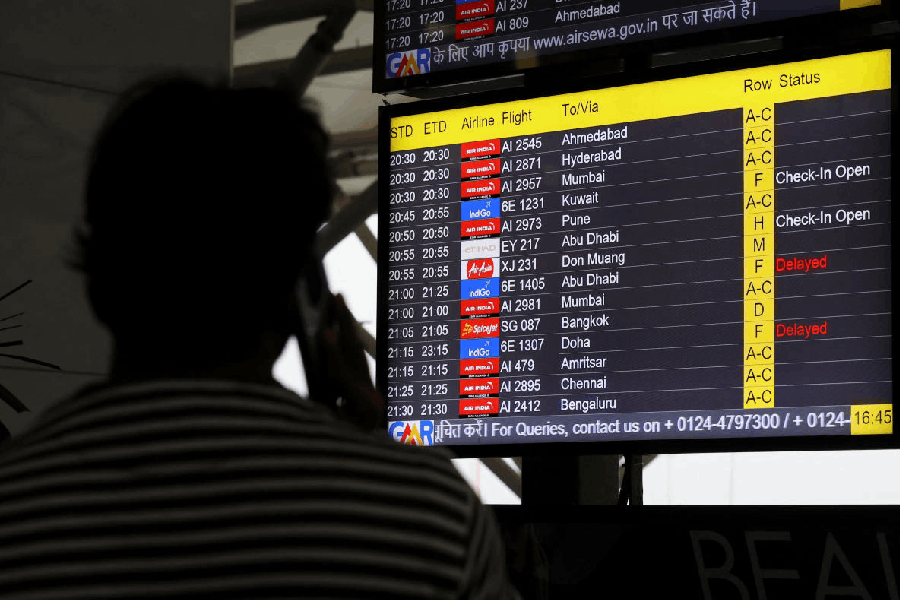Whether all ten artists in Emami Art’s online presentation can be grouped as Bengal Masters — the title of the show — is a matter of perception. But they do represent, if somewhat patchily, the broad trends of Bengal modernism as it unfolded through enquiries into identity, Western avant-gardism and individualism. However, most of the 19 examples on view don’t go beyond predictability.
Though Nandalal Bose (1882-1966) had a Bengal School initiation, the two works here don’t seem to be from his early phase. But the pastoral romanticism of the painting of a calf drinking its mother’s milk, whose date can’t be figured out, indicates how he was resolving the problem of ideology with intimate observation. Indra Dugar (1918-1989) is represented by dainty flower studies in the Santiniketan tradition.
Away from Tagore’s abode, Jamini Roy (1887-1972), meanwhile, had been discovering the infectious vitality of the authentic voice: the marginal traditions of folk art and crafts. How their form and colour could be re-invented as a modern idiom is asserted in his paintings here (picture). A welcome name rarely seen at shows is Abani Sen (1905-1972), who experimented with European stylistic options, as is evident from the two works presented. Especially interesting is his Bathers (1962), which is clearly in conversation primarily with Cézanne, but also Cubism and Matisse. The singularly gifted Nikhil Biswas (1930-1966), denied a ripening of his sensibility by untimely death, still engages the viewer with his tense energy.
A watercolour by Gopal Ghose (1913-1980) takes an angled, sky-eye perspective of a bleak, bereft landscape in muted shades. Though it isn’t unusual at all, it casts an aching, nostalgic spell. The works by Kartick Pyne (1931-2017) are rather insipid watercolours that aren’t marked by his signature of reducing form to quaint shapes in striking contrasts of tone. The acrylics by K.G. Subramanyan (1924-2016), done on circular sharas, are quite typical of his mannered style. So is the caricatural wit of Paritosh Sen (1918-2008). And, finally, from Jogen Chowdhury’s student days, there are two drawings of refugees at Sealdah Station. But the simple lines of these exercises seethe with sullen defiance.










